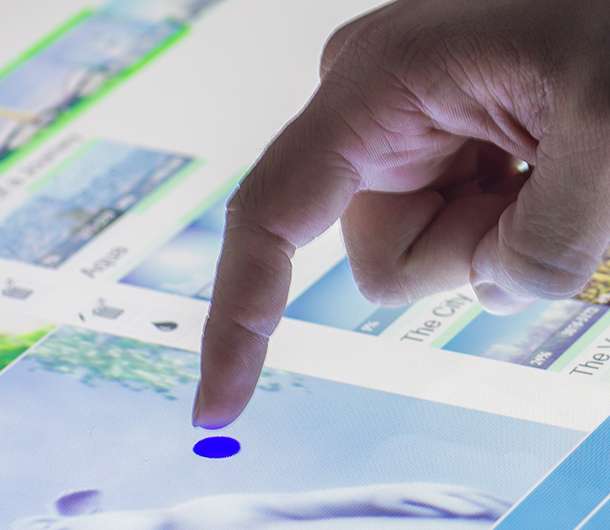In a new method for searching image databases, a hand-drawn sketch is all it takes

Computer scientists at the University of Basel have developed a new method for conducting image and video database searches based on hand-drawn sketches. The user draws a sketch on a tablet or interactive paper, and the system searches for a matching image in the database. The new method is free to access for researchers.
People today are increasingly confronted with the challenge of having to find their way around vast collections of photos and videos, both in their work lives and at home. Although search engines such as Google and Bing make it easy to find documents or websites quickly and efficiently using search terms, the options for searching collections of multimedia objects are more limited.
A broadly defined similarity concept
Researchers at the Department of Mathematics and Computer Science at the University of Basel have developed a system known as 'vitrivr', which allows a search for images and videos by means of a sketch. The user creates a sketch of the desired object on a tablet or interactive paper, and the program delivers the images and video clips that most resemble it. For videos, the user can even specify on the sketch in which direction an object is moving in the searched sequence.
In designing the system, the researchers deliberately set a very broad similarity concept and adapted it to different types of sketch; for example, similar colors, shapes or directions of movement.
Individual searches can then be augmented by a range of other query types – search terms, examples of images and videos, or combinations of all these. An important feature of the new system is its scalability, a feature that means it can be used even with very large multimedia collections.
Freely available system
The vitrivr system is entirely open source and is therefore freely available to the international research community. It is already being used for a wide range of purposes, from discerning patterns of movement in sports videos for the Federal Office of Sport to searching collections of digital watermarks in a collaboration with the Basel Paper Mill.
Researchers around the world are currently working on developing the system, often with the support of well-known programs, such as the Google Summer of Code. vitrivr is also the basis for the iMotion research project, which is funded by the EU and the Swiss National Science Foundation, and is set to be used as a search engine for large-scale video collections as part of a collaboration with Red Hen Labs in the US.
More information: www.vitrivr.org/
Provided by University of Basel

















